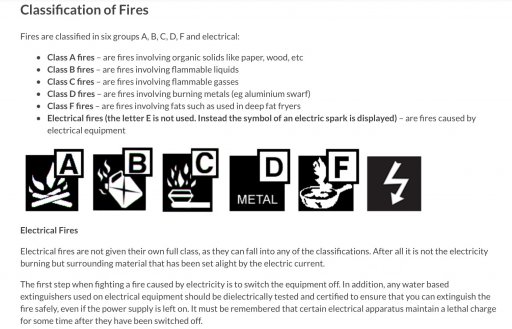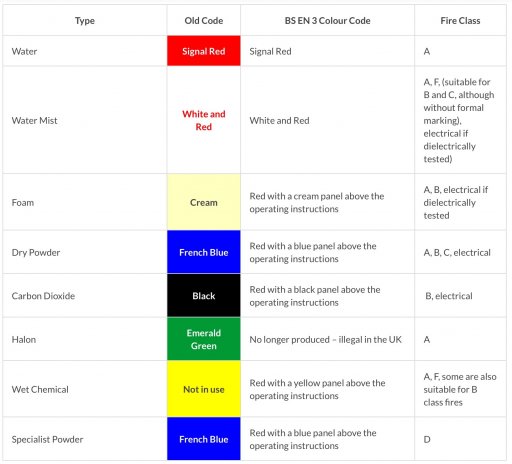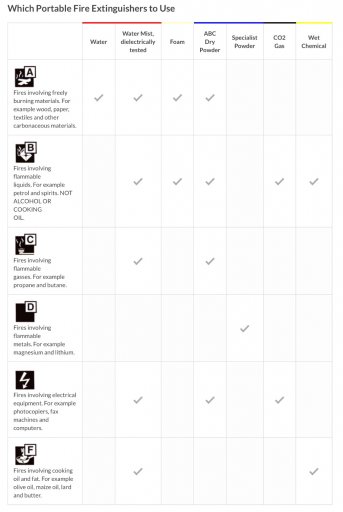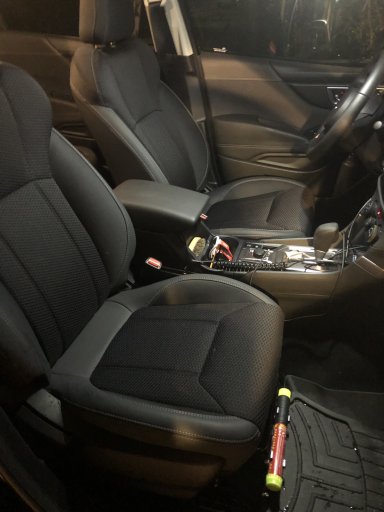Long story short ...
Long time ago I left a so-called "reputable" dealership garage after a simple oil change. Before driving a couple of miles I noticed smoke rising from my engine compartment. Pulling off to the shoulder, I removed my child from the vehicle and within seconds the car was in flames. The fire department said it looked like a rag was sitting on the manifold and it had ignited. I had no experience, and there were no cell phones then. I couldn't prove who destroyed my car (no doubt a shop mechanic left the rag), so with only minimum insurance I lost everything that day.
I wished I'd had an extinguisher to have prevented a total loss. Needless to say, I raise the hood every time before pulling out of any service bay or garage parking lot.
Back to the subject ...
I have two questions.
First, in my reading all the info here, does anyone know if there are temperature limitations on these fire extinguishers? Not the water tank kind, but the chemical/powder kind you are discussing? As related to storing one in a vehicle, what's the highest and lowest outdoor temps the extinguisher can withstand while in a vehicle before damage would occur?
Second question, sort of related ... Does anyone keep a welder's blanket or fire blanket of some kind for fire emergencies with their extinguisher as a backup? Something to cover a fire to help suffocate flames or sparks?
I would appreciate feedback as I can't see investing all kinds of money into my vehicle and not be adequately prepared for such emergencies.
Thanks ahead.
Long time ago I left a so-called "reputable" dealership garage after a simple oil change. Before driving a couple of miles I noticed smoke rising from my engine compartment. Pulling off to the shoulder, I removed my child from the vehicle and within seconds the car was in flames. The fire department said it looked like a rag was sitting on the manifold and it had ignited. I had no experience, and there were no cell phones then. I couldn't prove who destroyed my car (no doubt a shop mechanic left the rag), so with only minimum insurance I lost everything that day.
I wished I'd had an extinguisher to have prevented a total loss. Needless to say, I raise the hood every time before pulling out of any service bay or garage parking lot.
Back to the subject ...
I have two questions.
First, in my reading all the info here, does anyone know if there are temperature limitations on these fire extinguishers? Not the water tank kind, but the chemical/powder kind you are discussing? As related to storing one in a vehicle, what's the highest and lowest outdoor temps the extinguisher can withstand while in a vehicle before damage would occur?
Second question, sort of related ... Does anyone keep a welder's blanket or fire blanket of some kind for fire emergencies with their extinguisher as a backup? Something to cover a fire to help suffocate flames or sparks?
I would appreciate feedback as I can't see investing all kinds of money into my vehicle and not be adequately prepared for such emergencies.
Thanks ahead.
















